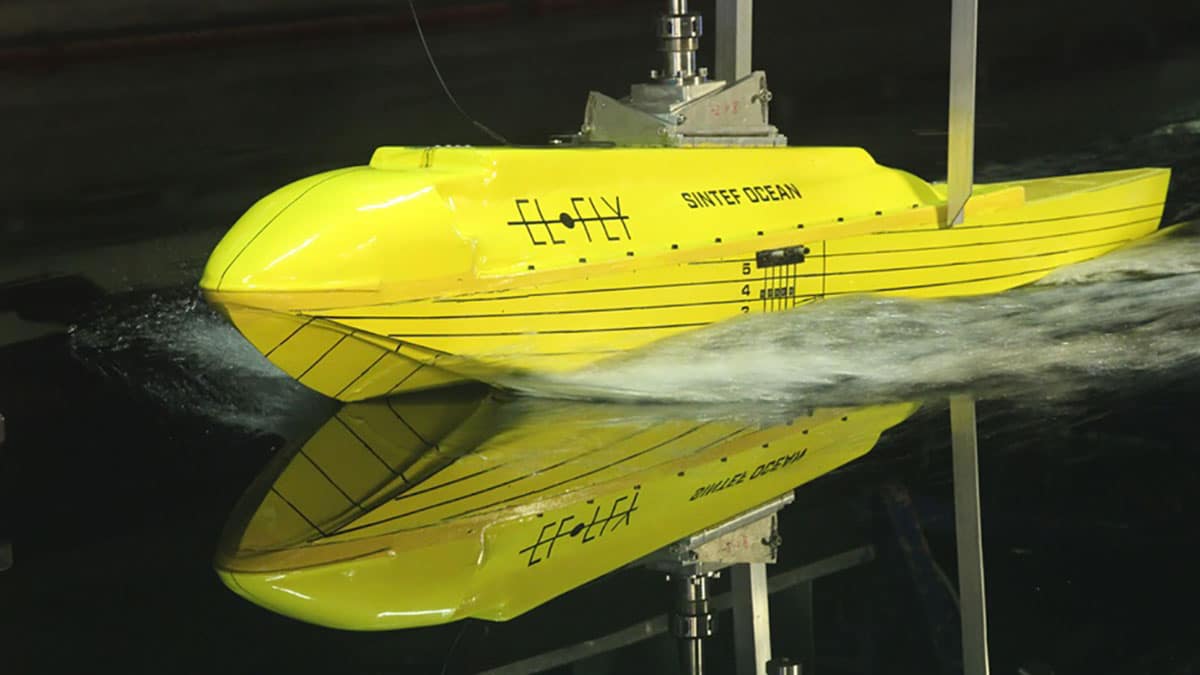
With more than 1000 fjords and 450,000 lakes, most of the Norwegian population lives close to a potential momentary runway. Due to Norway’s mountainous profile and the limited connecting infrastructure, the seaplane could be a quick, non-intrusive way of transporting people over challenging terrain. Hours spent in a car between small cities could be reduced to minutes.
With this in mind, the Elfly project was born, as it is developing a small electric seaplane that can transform local passenger traffic on a large scale. Developed by a startup based in Bergen, Norway, the project has now entered an advanced testing phase in collaboration with SINTEF.
The Research Council of Norway is providing NOK 16 million in funding for the seaplane project. The money will be used to get a full-scale prototype in the air within three years.
The future seaplane’s hull is undergoing tests at Norway’s SINTEF research institute in Trondheim, where scale models are being towed across the surface of a 260-meter-long water tank to discover the optimal shape.
Naturally, the new seaplane needs a completely new type of design based on a boat hull. “It is particularly important to develop the hull so that the aircraft can take off using as little power as possible. The challenge is to find the ultimate combination of aerodynamics and hydrodynamics,” says Kourosh Koushan, a SINTEF research scientist.
This is challenging, among other things, because the propellers above the wings initially push the bow of the hull downwards in the water before the plane gradually lifts as it gains speed.
Elfy’s future seaplane will be electric, environmentally friendly, quieter, and able to fly shorter routes from a larger number of locations. Designed to carry up to nine passengers with zero emissions and no noise, the seaplane will be capable of flying 200 km (124 miles) at around 250 km/h (155 mph). The flight time from Bergen to Stavanger will then be 40 minutes, as compared with four to five hours by car. The range is likely to increase as battery technology advances. The battery may weigh up to 1.7 tonnes and shall theoretically be capable of being charged anywhere, using the same plug as for electric boats.
In addition to passenger flights, seaplanes may also be used for goods transport, ambulance services, and premium flights, for which the entire aircraft can be chartered. Elfly’s electric seaplane is still under development, but the startup has big plans, hoping to have 15 or 20 aircrafts in the air by 2030.
“This will be a kind of battery-powered flying boat. The goal is to be able to provide flexible mobility in Norway, with zero emissions and significantly reduced noise pollution, and also develop new, sustainable business models,” says Eric Lithun, CEO of Norwegian company Elfly.
Norway to launch an electric flying boat for luxury transport
Source: Tambay News

0 Comments